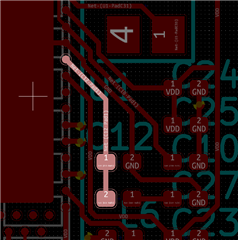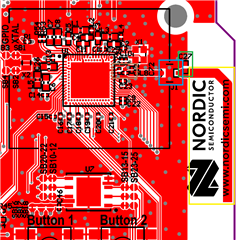The recommended circuit in the v0.5 nRF5340 product spec differs a little from the nRF5340-PDK and I'm trying to understand the minimum requirements for an antenna. The spec shows the antenna (L6) as a 0201 sized, 2.2nH high-frequency inductor—is this all that is needed to do short-range TX/RX? For example, a TDK MHQ0603P2N2BT000?
My board has L6 off of pin L31 (image bottom) with C12 (image middle) grounded through J31 to the chip pad, per the spec. We aren't looking for awesome wireless performance, but it's unclear if this inductor is meant to stand alone, or requires a trace antenna on the other end?


